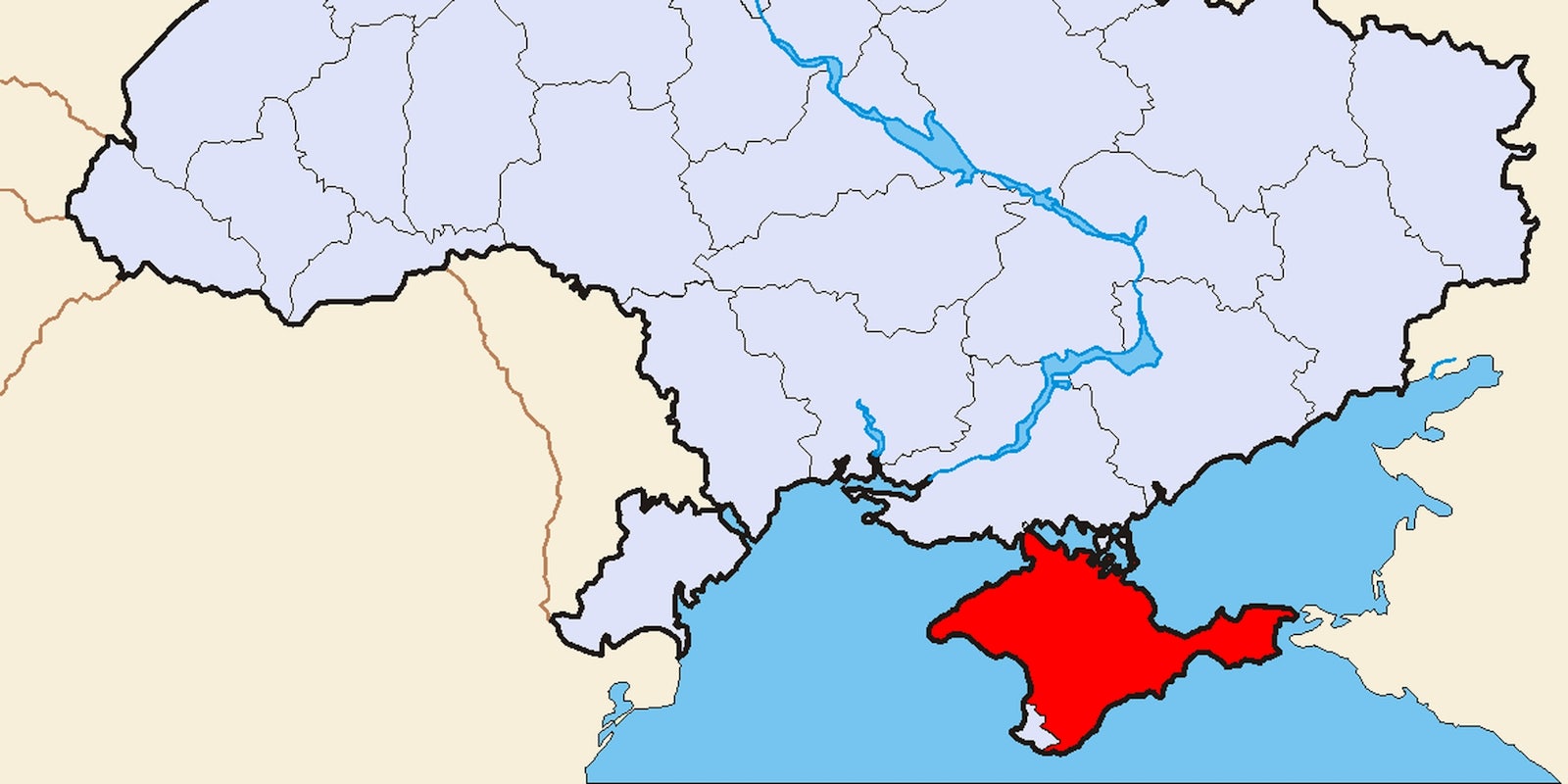On Wednesday, Canada’s delegation to NATO trolled Russia on Twitter, posting a picture of a map that made it very clear that Ukraine wasn’t Russian territory. Today, as reports show that Russia is invading Ukraine, the Twitter account for the Permanent Mission of Russia to NATO has responded to the Canadians’ tweet.
Helping our Canadian colleagues to catch up with contemporary geography of #Europe @CanadaNATO pic.twitter.com/MjzRxpFFfN
— Russians at NATO (@natomission_ru) August 28, 2014
Russia’s own map carefully excludes the vast majority of Ukraine, including regions of separatist activity like Donetsk. Instead, it is centered on the Crimean peninsula, which the Russians maintain they have a right to control because it is composed primarily of ethnic Russians who, Russia says, fear Ukraine’s new national government.
Given how widespread Russian-backed separatists are in Crimea, the Russian government’s tweet calling this the “contemporary geography” of the region is not entirely wrong. In many important ways, Russia’s supporters say, Crimea is essentially a part of Russia.
What is most interesting about this map is that it is actually the second version that Russia tweeted. The first version, captured by Twitter user @UrbanAchievr, accidentally showed the disputed territories of Abkhazia and South Ossetia as part of Georgia. Most of the international community considers these regions to be part of Georgia, although they operate as independent entities. In 2008, Russian troops helped rebel Georgia’s attempt to reclaim South Ossetia.
The current version of Russia’s map reflects these territories’ disputed status.
Russia wasn’t done trolling Canada after it tweeted the updated map. In a second tweet, Russia’s NATO delegation pointed to Canada’s own system of “asymmetrical federalism” and suggested that Crimea be allowed to enter into a similar relationship with the national government in Ukraine.
BTW why not share Canadian experience of “asymmetrical federalism” with #Kiev‘s authorities @CanadaNATO
— Russians at NATO (@natomission_ru) August 28, 2014
Foreign policy analysts widely see the push for such an arrangement as the pretext for a takeover of the peninsula by Russia.
Photo via Jeroen/Wikimedia Commons (CC BY 3.0)


